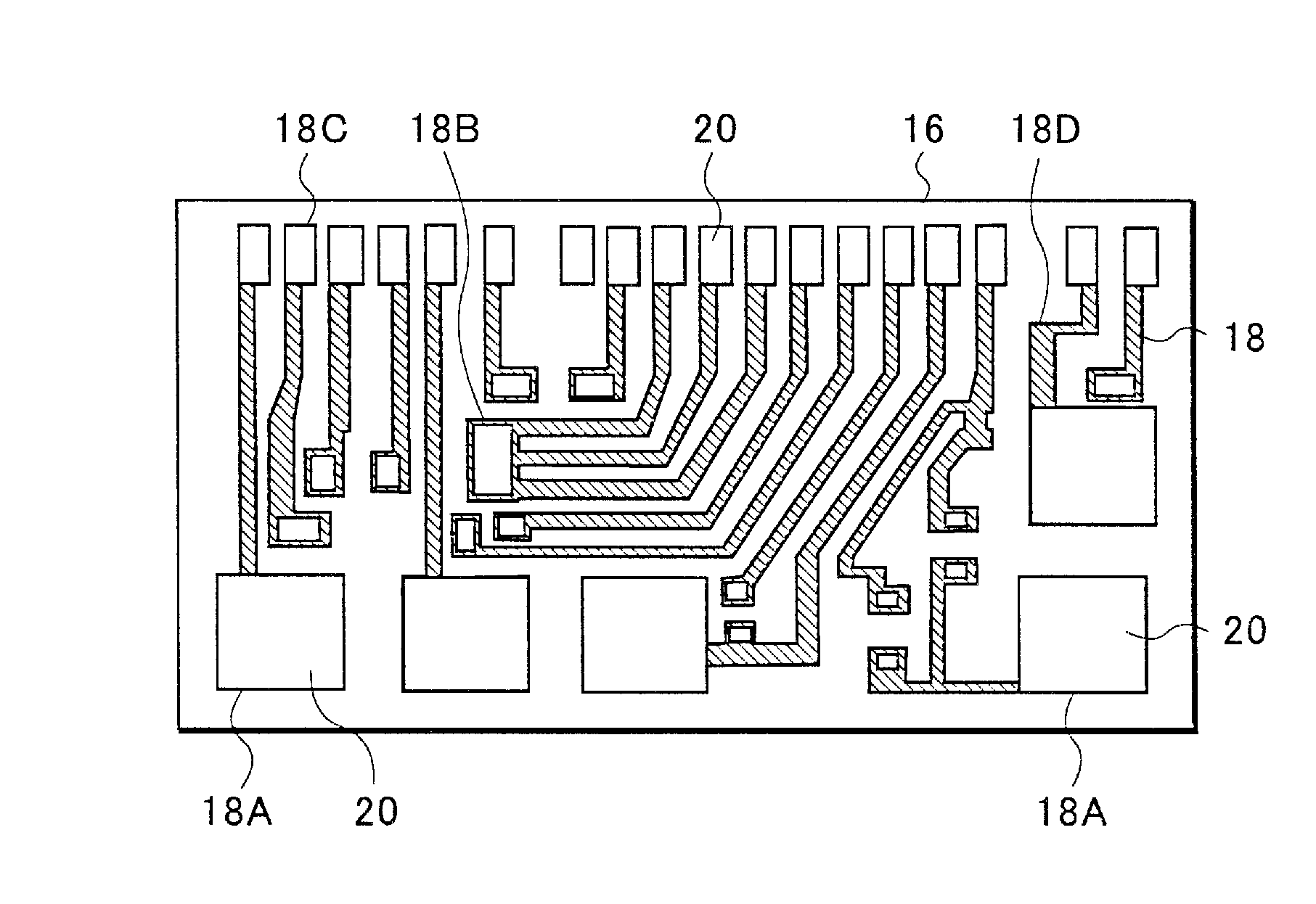Circuit device and method of manufacturing the same
a technology of circuit devices and connection parts, applied in the direction of final product manufacturing, sustainable manufacturing/processing, semiconductor/solid-state device details, etc., can solve the problems of solder connection parts that are weakened, solder sinks occur, etc., to reduce the occurrence of solder sinks and improve the connection reliability of solder connection parts.
- Summary
- Abstract
- Description
- Claims
- Application Information
AI Technical Summary
Benefits of technology
Problems solved by technology
Method used
Image
Examples
first embodiment
[0038] In this embodiment, with reference to FIGS. 1A to 1C, description will be given of a configuration of a hybrid integrated circuit device 10 that is a circuit device of the present invention. FIG. 1A is a perspective view of the hybrid integrated circuit device 10, FIG. 1B is a cross-sectional view thereof, and FIG. 1C is a cross-sectional view showing a heat sink 14D fixed to a pad 18A.
[0039] As shown in FIGS. 1A and 1B, in the hybrid integrated circuit device 10, a conductive pattern 18 is formed on a surface of a substrate 16, and a circuit element such as a transistor is fixed to the conductive pattern 18 with a solder 19 interposed therebetween. Moreover, at least the surface of the substrate 16 is covered with a sealing resin 12.
[0040] As the substrate 16, a metal substrate mainly made of aluminum, copper or the like, a substrate made of a resin material such as an epoxy resin, a substrate made of a flexible sheet, for example, a printed board, or the like is used. Mor...
second embodiment
[0053] In this embodiment, with reference to FIGS. 3 to 8, description will be given of a method of manufacturing the hybrid integrated circuit device 10 described above.
[0054] First Step: See FIGS. 3A and 3B
[0055] In this step, a conductive pattern 18 is formed on a surface of a substrate 16. FIG. 3A is a plan view of the substrate 16 in this step, and FIG. 3B is a cross-sectional view thereof.
[0056] As shown in FIGS. 3A and 3B, by patterning a conductive foil attached to the surface of the substrate 16, the conductive pattern 18 having a predetermined pattern shape is formed. Here, the conductive pattern 18 forms pads 18A to 18C. The pad 18A is a pad to which a heat sink is fixed in a subsequent step, and is formed to be relatively large. For example, the pad 18A is formed in a rectangular shape having a size of 9 mm×9 mm or more. The pad 18B is a pad to which a small signal transistor or a chip component is fixed, and is formed to be smaller than the pad 18A. For example, the p...
third embodiment
[0094] In this embodiment, description will be given of another method of manufacturing a hybrid integrated circuit device. Here, solder paste is collectively melted to fix circuit elements.
[0095] As shown in FIG. 9A, first, a substrate 16 on which a conductive pattern 18 is formed is prepared, and solder paste 21 is applied to desired pads. In this embodiment, the conductive pattern 18 forms pads 18A and 18B. The pad 18A is a pad to which a heat sink is fixed, and is formed to be as large as about 9 mm×9 mm or more, for example. The pad 18B is a pad to which a chip component such as a chip resistor or a small signal transistor is fixed, and is formed to be smaller than the pad 18A.
[0096] In this embodiment, a plated film 20 made of nickel is formed on a surface of the large pad 18A in which sink is likely to occur. Therefore, even if the solder paste 21 is melted, a Cu / Sn alloy layer having poor soldering properties is not formed. In this embodiment, a Ni / Sn alloy layer having so...
PUM
| Property | Measurement | Unit |
|---|---|---|
| Electrical conductor | aaaaa | aaaaa |
| Wettability | aaaaa | aaaaa |
Abstract
Description
Claims
Application Information
 Login to View More
Login to View More - R&D
- Intellectual Property
- Life Sciences
- Materials
- Tech Scout
- Unparalleled Data Quality
- Higher Quality Content
- 60% Fewer Hallucinations
Browse by: Latest US Patents, China's latest patents, Technical Efficacy Thesaurus, Application Domain, Technology Topic, Popular Technical Reports.
© 2025 PatSnap. All rights reserved.Legal|Privacy policy|Modern Slavery Act Transparency Statement|Sitemap|About US| Contact US: help@patsnap.com



